If you're not going for it in today's MLB environment, you're -- well, let's not use the T-word and just go with "developing." Teams that build from their farm system, through the draft, the international market and trades of veterans for prospects, keep reaching and winning the World Series.
The Royals had the No. 1 farm system in baseball in 2011 and won two pennants as a result, including a world championship in 2015. The Cubs hit the top five in 2013, ranked No. 1 in 2015, and won the World Series in 2016. The Astros had the No. 1 farm system in baseball in 2014 and won their first World Series in 2017.
I don't think any of this is a big coincidence: Teams can't buy championships. They can buy a player or two to finish off a good roster, but the bulk of a pennant-winning roster comes from within, either through cheaper players the team developed from its farm system or veterans acquired by trading such prospects.
This year's prospect rankings package begins with the first half of my ranking of the top 100 prospects in the minors. For Nos. 50-1 click here.
Editor's note: Age is the player's age as of July 1, 2018. Players with experience in foreign major leagues like Japan's NPB or Korea's KBO, such as Shohei Ohtani, are ineligible for these rankings.
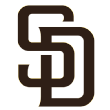 51. Michel Baez, RHP, San Diego Padres
51. Michel Baez, RHP, San Diego Padres
Age: 22 (1/21/1996)
Bats: R | Throws: R
6-foot-8 | 220 pounds
Top level: Class A | 2017 rank: Unranked
Baez signed for $3 million in the Padres' epic July 2 free-agent class, but I don't think anyone expected the kind of performance the the 6-foot-8 right-hander showed this summer in low-A Fort Wayne. Baez arrived in the Midwest League on July 4 for his first start outside of the Arizona Rookie League and punched out 34 percent of batters he faced while walking just eight men across 10 starts there.
He will hit 98 mph and pitch comfortably in the mid-90s with good angle thanks to his height, showing an above-average to plus changeup and a slurvy curveball that comes and goes start to start. His extension gets him a little extra hop on his fastball in the zone, which so far has allowed him to miss bats with the pitch.
The Padres were cautious about innings in his first pro season, but Baez, who just turned 22, needs to be challenged this year with better competition, as he has No. 2 upside but simply overpowered the younger low-A hitters he faced last year.
 52. Yadier Alvarez, RHP, Los Angeles Dodgers
52. Yadier Alvarez, RHP, Los Angeles Dodgers
Age: 22 (3/7/1996)
Bats: R | Throws: R
6-foot-3 |175 pounds
Top level: Double-A | 2017 rank: 46
On pure quality of pitches, Alvarez would be in the top 20, but man shall not live by stuff alone, and Alvarez remains a work in progress as a pitcher.
He has hit 100 mph and will work with an upper-90s fastball and upper-80s slider that can show plus. He'll show a curveball and changeup but can slow his arm enough on the latter to tip better hitters off that he's throwing it.
His arm is loose, and his high slot can make it tough for right-handers to see the ball. He doesn't repeat his delivery well yet, leading to below-average command and control, exacerbated by a pitching style that emphasizes throwing everything hard rather than locating pitches and changing speeds.
Alvarez got off to a late start in 2017 when he showed up to spring training out of shape, and his control issues may eventually force him to the bullpen. The Dodgers see the upside he'd have as a starter, with three or four pitches that can overpower hitters even if his command is average at best.
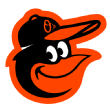 53. Chance Sisco, C, Baltimore Orioles
53. Chance Sisco, C, Baltimore Orioles
Age: 23 (2/24/1995)
Bats: L | Throws: R
6-foot-2 | 195 pounds
Top level: MLB | 2017 rank: 69
Sisco had a bit of a down year with the bat in his first full season in Triple-A, although he was still 22 and started to drive the ball a little more than he had at lower levels.
An infielder for much of his high school career, Sisco has taken well to the receiving and blocking aspects of catching, with an average-ish arm being his one drawback, although that's become less important in today's homer-happy environment.
At the plate, Sisco has a short, strong swing that produces a lot of hard contact without much power, but he has enough raw juice to get to 15-20 homers if he gets more aggressive in hitters' counts and lets it rip.
He has a high floor as at least a platoon catcher -- he has never hit lefties well, but also hasn't faced many as Baltimore chose to give starts against southpaws to Francisco Pena last year -- but there's above-average regular upside if Sisco can unlock some of that home run potential in games.
 54. Miguel Andujar, 3B, New York Yankees
54. Miguel Andujar, 3B, New York Yankees
Age: 23 (3/2/1995)
Bats: R | Throws: R
6-foot | 215 pounds
Top level: MLB | 2017 rank: Unranked
For all the hype Yankees prospects can get -- and all the complaining fans of other teams offer about this -- Andujar has avoided the publicity machine while quietly moving up the chain for the Bombers since he signed as an amateur in 2011.
He always has been a good hitter for contact but got a bit stronger and started making better contact in 2017, setting career highs in doubles, homers, and his triple-slash stats without an increase in his strikeout rate.
He has a rifle of an arm and has improved his footwork to the point that he should be an average defender at third. Perhaps the lack of hype is because other than the arm, Andujar doesn't really have a plus tool -- he does everything well, but nothing superbly.
I think he's no worse than a solid-average regular at third, probably a grade 55 at his peak, hitting around .300 with 15-20 homers, average defense and maybe a lower OBP than you'd like. The Yankees seem inclined to give him a shot to win the third base job this spring, and all signs right now are that he's ready to take it.
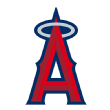 55. Jo Adell, OF, Los Angeles Angels
55. Jo Adell, OF, Los Angeles Angels
Age: 19 (3/8/1999)
Bats: R | Throws: R
6-foot-2 | 195 pounds
Top level: Rookie | 2017 rank: Not eligible
Adell was the 10th overall pick in the draft in June after a spring that divided scouts: Many teams loved his power and athleticism, while others worried about swinging and missing as well as a sudden loss of arm strength during the season.
The Angels have to be thrilled with the early returns, however, as Adell, who played high school ball outside of Louisville, was better than anticipated. He showed an advanced approach and ability to make adjustments even within games. The Halos promoted him to the Pioneer League during the season, yet Adell posted a .325/.376/.532 line for the whole summer with just a 22 percent strikeout rate as a true 18-year-old.
He didn't play the field because of the arm issue, but if he's recovered by spring, he should go out as a center fielder thanks to his plus speed and what was a plus throwing arm as well. Even if he has to move to left -- an absolute worst-case scenario -- his bat looks like it's going to profile there with 80 raw power and huge exit velocities already in pro ball, as well as the aptitude to adjust to the challenges he'll face when he sees better pitching in the Midwest League this year.
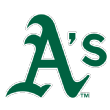 56. James Kaprielian, RHP, Oakland Athletics
56. James Kaprielian, RHP, Oakland Athletics
Age: 24 (3/2/1994)
Bats: R | Throws: R
6-foot-4 | 200 pounds
Top level: High-A | 2017 rank: 28
Kaprielian missed much of the 2016 season with an elbow injury, was lights out in the Arizona Fall League and then blew out in the spring, needing Tommy John surgery in April 2017. That will keep him out of action until a little after the start of this season.
In the fall of 2016, Kaprielian showed top-of-the-rotation stuff: a 94-97 mph fastball with a plus slider up to 89 mph and a plus changeup in the mid-80s. He also has bulked up to the point that he at least looks ready for a full starter's workload. His delivery had a little effort to it but no obvious red flags, and he has always been a strike-thrower when healthy.
We'll see how the stuff returns, but Oakland was confident enough to take him in the Sonny Gray deal, buying low on a guy with No. 1 starter potential.
 57. Cristian Pache, OF, Atlanta Braves
57. Cristian Pache, OF, Atlanta Braves
Age: 19 (11/19/1998)
Bats: R | Throws: R
6-foot-2 | 185 pounds
Top level: Class A | 2017 rank: Unranked
Pache has yet to hit a home run in pro ball so this might sound a bit odd, but I think he's going to end up a 20-homer guy who plays elite defense in center field. He was the youngest position player to play at least 100 games in the Sally League -- he didn't turning 19 until November -- yet still finished ninth in the league in batting average and 18th in OBP, thanks to his plus bat speed and high contact rate.
Pache came into the organization as a contact and ground-ball hitter, but has worked on putting the ball in the air more often, which is why many scouts believe (as I do) that he's going to come into power as he gets older.
He's a plus runner who also has great instincts in center, gliding to fly balls in a manner somewhat reminiscent of another great center fielder who came through the Atlanta system. Pache will go to high-A and play in a tough league for home runs this year at age 19, but as long as he progresses in hitting fly balls and line drives, he'll stay on a path to his ceiling as a 70 defender who hits for average with some power.
 58. David Peterson, LHP, New York Mets
58. David Peterson, LHP, New York Mets
Age: 22 (9/3/1995)
Bats: L | Throws: L
6-foot-6 | 240 pounds
Top level: Class A (Short) | 2017 rank: Not eligible
The 20th overall pick in the 2017 draft, Peterson is 6-foot-6 but more of a command lefty than the power guy you might expect from his frame. He racked up a 20-strikeout game during a junior season at Oregon when he struck out more than 34 percent of batters he faced while walking only one batter per start.
Peterson's fastball comes in at 90-92 on average and touches 94 when he needs a little more, but the grade 55 slider is his out pitch, and he can throw both for strikes. He takes advantage of his height with huge extension toward the plate and has a little funk in the back of his delivery to give him some more deception. He struck out every left-handed batter he faced in pro ball last year. OK, it was only two guys because the Mets limited him to 3.2 innings due to a heavy spring workload and late signing date.
He'll need to throw his changeup, which is fringe-average to average, more in pro ball to stay ahead of right-handed hitters, and as with most deception guys he might run into trouble with smarter hitters at the upper levels. He should sail through A-ball given his ability to throw two pitches where he wants them and the difficulty hitters have seeing the ball; he has a high floor as a back-end starter, but there's a little Chris Sale/Alex Wood potential here if he adds velocity when he fills out.
 59. JoJo Romero, LHP, Philadelphia Phillies
59. JoJo Romero, LHP, Philadelphia Phillies
Age: 21 (9/9/1996)
Bats: L | Throws: L
6-foot | 190 pounds
Top level: High-A | 2017 rank: Unranked
The Phillies took Romero in the fourth round in 2016 out of Yavapai Junior College in Arizona, only to have him fly past many of their better-known prospects and spend half of his first full year in the minors in High-A Clearwater.
Romero will sit 94-96 with his four-seamer but can also throw a low-90s sinker, and he held his velocity well deep into the season. He has a cutter and changeup, showing an advanced feel for how and when to use all of his pitches with minimal platoon split this year. The delivery is quick and compact with a slight cutoff in his landing, probably adding to his deception but limiting his glove-side command.
He's a bit undersized, but the four-pitch mix, command and ability to miss bats all point to a future as a starter, probably a good No. 3 or a little above average.
 60. Mike Soroka, RHP, Atlanta Braves
60. Mike Soroka, RHP, Atlanta Braves
Age: 20 (8/4/1997)
Bats: R | Throws: R
6-foot-5 | 225 pounds
Top level: Double-A | 2017 rank: Unranked
Soroka was the team's second pick in the 2015 draft that included lefty Kolby Allard, with whom Soroka jumped from low-A to Double-A last year.
Soroka will show a three-pitch mix with a solid-average fastball up to 94, an above-average slider, and a fringy changeup; he comes from a low three-quarters arm slot that gives his fastball some sinking life and helps him get angle to the slider, although it also gives left-handed hitters a longer look at the ball. He showed a modest platoon split in Double-A last year -- small enough that he'll be able to stay in the rotation if it doesn't widen.
He has average command and above-average control already at age 20, and could see the majors soon despite his youth, especially since the Atlanta coaches love his makeup and intelligence on the mound. There is mid-rotation upside but there is also reliever risk here because of the delivery and risk that lefty-heavy lineups will get to him.
 61. Ke'Bryan Hayes, 3B, Pittsburgh Pirates
61. Ke'Bryan Hayes, 3B, Pittsburgh Pirates
Age: 21 (1/28/1997)
Bats: R | Throws: R
6-foot-1 | 210 pounds
Top level: High-A | 2017 rank: 74
Hayes can really play defense, and he can hit, at least in the sense of putting the ball in play with enough impact to get his base hits.
Hayes, the son of that guy who caught the final out in the 1996 World Series, played the full year at age 20 in the Florida State League, yet struck out just 76 times in 482 plate appearances. That ranked 50th in the league and was behind a lot of players who were there only half a season or less.
He's not a plus runner but has outstanding instincts on the bases, finishing fourth in the FSL in triples and fifth in stolen bases (84 percent success rate). He's a 60 defender -- and trending toward 70 -- with a plus arm at third right now, and I think he'd adjust quickly to the slightly quicker pace of the major league game. That kind of glove with a high average, contact rate and added value on the bases would make him a regular.
The power output is the main question here, as Hayes has some loft in his swing but so far has focused his conditioning on getting leaner rather than adding muscle. Even 10 homers a year would make him a good regular, and I think there's 15-20 potential in there; we should see more of it in 2018 as he escapes the Florida State League for a more hitter-friendly environment.
 62. Jaime Barria, RHP, Los Angeles Angels
62. Jaime Barria, RHP, Los Angeles Angels
Age: 21 (7/18/1996)
Bats: R | Throws: R
6-foot-1 | 210 pounds
Top level: Triple-A | 2017 rank: Unranked
Barria's stuff had been ahead of his results before last year, when the Panamanian-born right-hander, who signed with the Angels in 2012, raced through three levels while improving his strikeout rate over his low-A performance in 2016.
He is a three-pitch command-and-control starter, working in the low 90s with an above-average changeup and average slider. He did hit 95 mph in the Futures Game in an inning of work, showing good fade on the changeup that day with a somewhat slurvy but hard breaker. Barria comes from a high slot that gives him some added deception, and he has consistently shown the ability to throw everything for strikes. His 5.8 percent walk rate in his dozen starts in Double-A was actually the highest of any stop in his career.
His ceiling is somewhat limited by the lack of a grade 60 pitch, but he's still just 21 and has already succeeded through Triple-A, so there's a good fourth starter floor here and some chance he finds another weapon to become more.
 63. Peter Lambert, RHP, Colorado Rockies
63. Peter Lambert, RHP, Colorado Rockies
Age: 21 (4/18/1997)
Bats: R | Throws: R
6-foot-2 | 185 pounds
Top level: High-A | 2017 rank: Unranked
Lambert doesn't get the hype of fellow Rockies prospect Riley Pint, who can hit 100 mph as a starter, but he's the better prospect right now thanks to a broader mix of stuff, command and feel for pitching.
Lambert is a four-pitch guy who'll touch 94-95 mph but sits mostly at 90-91 mph on a fastball he throws for strikes. He's very athletic with some projection left in his body, so those 94s and 95s on the fastball should become more frequent as he gets older. He also mixes in an above-average changeup, a curveball and a cutter with potential for all four of his pitches to be average or better.
He had a tremendous year pitching for Lancaster -- one of the worst pitchers' parks in baseball -- as a 19-year-old and actually boosted his strikeout rate and cut his walk rate even with the promotion from low-A. If he stays healthy, he looks like a good bet for a No. 4 starter floor but given his feel for pitching and athleticism, I believe he'll keep improving enough to become an above-average starter after a little time in the majors.
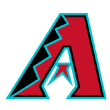 64. Jon Duplantier, RHP, Arizona Diamondbacks
64. Jon Duplantier, RHP, Arizona Diamondbacks
Age: 23 (7/7/1994)
Bats: L | Throws: R
6-foot-4 | 225 pounds
Top level: High-A | 2017 rank: Unranked
Arizona's third-round pick in 2016, Duplantier might have been a first-rounder had he not been a Rice product (Owls pitchers have an abysmal track record of injuries in pro ball) who missed his sophomore season with a shoulder injury that didn't require surgery.
The pick was a risk that looks to be paying off now, as Duplantier finished the year by dominating high-A with a four-pitch mix that features a new slider he uses to terrorize right-handed batters. Righties hit just .184/.235/.255 against him on the year. Even if we ignore his low-A tenure, since he was too experienced for the level, he punched out 37 percent of right-handers in the high-A Cal League. His changeup can show above-average as well, and so far he hasn't had much of a platoon split in pro ball.
Duplantier is an above-average athlete with a slightly long arm action, at least in back, where he started to develop a stabbing motion midyear at the same time that his velocity dipped before the fastball returned later in the summer. His durability is still a question even though he was healthy all of 2017. But the best news for Arizona is that he has shown the assortment of pitches and control to offer a pretty high floor as a starter -- as long as he stays healthy -- with a chance for a No. 3 starter and a high probability he's at least solid-average.
 65. Shane Baz, RHP, Pittsburgh Pirates
65. Shane Baz, RHP, Pittsburgh Pirates
Age: 19 (6/17/1999)
Bats: R | Throws: R
6-foot-3 | 190 pounds
Top level: Rookie | 2017 rank: Not eligible
The No. 12 overall pick in 2017, Baz boasted the best full arsenal of any pitcher in the draft class. He hit 98 as an amateur, but the Pirates saw a bit less velocity in pro ball, which is a good thing, as he can work with a 92-95 mph fastball without much effort and should be able to command it better.
He has a comically big arsenal for an 18-year-old, bringing four- and two-seam fastballs, a curveball, a change, and either a cutter/slider or two distinct pitches that just run into each other.
Baz probably doesn't need all of those weapons, at least not yet, and I expect the Pirates to try to simplify his mix in the short term and have him work on fastball command and developing the change, as both breaking balls can already flash plus. Some scouts raised concerns pre-draft about his four-seamer being too straight, so it will be interesting to see how that plays in full-season ball and whether he switches to throwing more two-seamers, working with a bit less velocity but more life and a looser, more fluid delivery.
There's a lot of variance in his outlook, but also a lot of different ways he could turn all of his skills into major-league production as a No. 2 starter or maybe even something more.
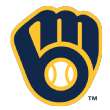 66. Lucas Erceg, 3B, Milwaukee Brewers
66. Lucas Erceg, 3B, Milwaukee Brewers
Age: 23 (5/1/1995)
Bats: L | Throws: R
6-foot-3 | 200 pounds
Top level: Triple-A | 2017 rank: 70
Erceg's full-season debut in 2017 was a mixed bag. He had a miserable start to the year but improved as the summer progressed, hitting .285/.339/.468 from June 1 on after entering the month with an OBP below .260.
He did show the ability to make consistent hard contact -- although the consensus remains that he'll be a high-doubles guy with 10-20 homer power -- and was surprisingly good against left-handed pitchers. (Scouts joked that the Carolina League, where Erceg spent almost the entire season, had so many southpaws that it should have been called the Caro-lefty League.)
In the field, Erceg might have an 80 arm, and his hands and feet are more than good enough to make him a plus defender, but he tends to play too aggressively, even going for ground balls that should be fielded by the shortstop, and he'd benefit just by slowing things down a bit.
I'd love to see him walk more, but he's got enough plate coverage that he tends to see something early in the count that he (thinks he) can hit. Even as a .330-.340 OBP guy, he'll be an above-average regular with 40-odd doubles and added value on defense.
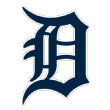 67. Franklin Perez, RHP, Detroit Tigers
67. Franklin Perez, RHP, Detroit Tigers
Age: 20 (12/6/1997)
Bats: R | Throws: R
6-foot-3 | 197 pounds
Top level: Double-A | 2017 rank: 66
Perez was the headliner in the Justin Verlander trade at the end of August as a 19-year-old right-hander who has already had success in low- and high-A as a starting pitcher.
Perez throws his fastball 92-96 with control (rather than command). He also has a hard 83-84 mph changeup with great action that mitigates the fact that you can see him turn it over that serves as his best off-speed pitch. His 80-83 curveball is fringy, as he tends to baby it rather than throw it full bore, but it could be a third above-average pitch for him if he learns to let it go.
Despite his youth, he doesn't offer much physical projection, as he's already well filled out, but his present velocity is more than enough to keep him a starter.
The Astros were cautious with his workloads, keeping him under 100 pitches all year and letting him complete only six innings twice in 19 starts so he might be a few years from being ready for a full starter's workload, but he has No. 2-3 upside when he gets there.
 68. Bryse Wilson, RHP, Atlanta Braves
68. Bryse Wilson, RHP, Atlanta Braves
Age: 20 (12/20/1997)
Bats: R | Throws: R
6-foot-1 | 225 pounds
Top level: Class A | 2017 rank: Unranked
Wilson was Atlanta's fourth-round pick out of a North Carolina high school in 2016, a kid with arm strength but a violent delivery that seemed as if it would preclude him from throwing strikes if it didn't first result in an injury. The team has done a tremendous job cleaning him up, so while there's still some effort, he now looks as if he'll be able to hold up as a starter and repeat his delivery enough to throw plenty of strikes.
His fastball ranges from 90-95 with a hard slider that flashes plus but can also get slurvy, and a below-average present changeup that projects to average as he gets used to throwing it. He's 6-foot-1 and well put together, bringing upside because he has limited mound experience as a former two-sport guy (he also played linebacker) in high school.
Wilson is athletic and already throws strikes with a good chance for two above-average pitches and no platoon split. He could be anywhere from a No. 2 starter to an eighth-inning reliever, but I believe in his combination of athleticism, aggressiveness, and present stuff.
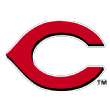 69. Tyler Mahle, RHP, Cincinnati Reds
69. Tyler Mahle, RHP, Cincinnati Reds
Age: 23 (9/29/1994)
Bats: R | Throws: R
6-foot-3 | 210 pounds
Top level: MLB | 2017 rank: Just missed
Mahle can touch 94-95 with good command on his fastball, sitting around 90-92 until he needs something extra, and will try to pitch to all four corners of the strike zone. He'll work with four pitches, including an above-average slider and average or better changeup, and shows exceptional feel for pitching and poise on the mound.
He doesn't have a clear swing-and-miss pitch and instead gets strikeouts by changing speeds and locations while working to the edges of the zone, although he had unusual trouble with lefties in his brief major-league call-up. He has posted outstanding results at every stop in the minors with a high floor as a back-end starter; his ceiling is probably that of a No. 3 barring an unexpected improvement in his stuff.
 70. Austin Meadows, OF, Pittsburgh Pirates
70. Austin Meadows, OF, Pittsburgh Pirates
Age: 23 (5/3/1995)
Bats: L | Throws: L
6-foot-3 | 200 pounds
Top level: Triple-A | 2017 rank: 9
Meadows had a bad year in 2017 on two fronts: He couldn't stay healthy, again, and he didn't hit well when he did play. It was the second straight year he failed to even reach 90 games played, a threshold he has reached only once (2015) as a pro.
He still has a good eye at the plate and a simple, line-drive swing that has led to a lot of contact but not enough impact for a player of his size. He had a rough April at the plate before he started to come around in May and early June, only to tear a hamstring, miss two months, and then strain an oblique muscle just eight games into his return to Triple-A.
The Pirates have had Meadows play all three outfield spots, and he has above-average speed so he could potentially stay in center, though his frequent injuries might get in the way of that as well.
Meadows did try to be more aggressive at the plate last year after concerns his approach was too passive, which should help him get to at least average power. He will turn 23 in May, which isn't old, but he is reaching a point when his chance of becoming a regular - much less the star ceiling he seemed to have - is dimming.
 71. Carson Kelly, C, St. Louis Cardinals
71. Carson Kelly, C, St. Louis Cardinals
Age: 23 (7/14/1994)
Bats: R | Throws: R
6-foot-2 | 220 pounds
Top level: MLB | 2017 rank: 51
Kelly has gone from suspect to prospect behind the plate even though he has spent only four years at the position, reaching the majors last summer so that Mike Matheny could play him sparingly. He has become an above-average catcher across the board, in receiving, framing, and throwing, receiving praise from Cardinals staff for how he works with pitchers.
At the plate, Kelly will show occasional power but overall he has been a high-contact, lower-impact hitter who might benefit from focusing less on contact and more on looking for pitches to drive.
Kelly is already better than a typical major league backup but has the upside to be a star if he can make better quality contact ... and if he gets the chance to play.
 72. Adrian Morejon, LHP, San Diego Padres
72. Adrian Morejon, LHP, San Diego Padres
Age: 19 (2/27/1999)
Bats: L | Throws: L
6-foot | 165 pounds
Top level: Class A | 2017 rank: 80
San Diego signed Morejon for $11 million in its spending spree after July 2, 2016, and the left-hander's pro debut was delayed by a sore shoulder last spring. He came back in mid-June without any loss of stuff, sitting 92-95 with a plus changeup and a short-breaking curveball that came and went start to start.
He's 6-foot or a shade over but gets on top of the fastball well. He dominated short-season hitters for seven starts so the Padres bumped him up to low-A Fort Wayne, where he still missed bats but started to walk guys as the better hitters there didn't chase pitches out of the zone. Morejon will pitch this whole year at 19, probably returning to the Midwest League to start the year, with eventual mid-rotation upside.
 73. Freicer Perez, RHP, New York Yankees
73. Freicer Perez, RHP, New York Yankees
Age: 22 (3/14/1996)
Bats: R | Throws: R
6-foot-8 | 190 pounds
Top level: Class A | 2017 rank: Unranked
A 6-foot-8 right-hander from the Dominican Republic who signed for a pittance in 2015, Perez has leapfrogged most of the higher-dollar signings from the Yankees' huge international free agent class that winter and emerged as a potential front-line starter.
Perez pitches at 94-98 now and shows a plus curveball and projectable slider along with a changeup that he's still learning to use. His arm is loose and easy, while his delivery is clean but inconsistent, as if he's still growing into his huge frame and working on getting his coordination. There's a longstanding maxim in scouting about how very tall pitchers take longer to control their limbs and learn their deliveries, so the fact that Perez is already this good might be a huge positive sign.
I'd like to see him extend more toward the plate at release, but the bigger priorities for him are staying healthy and working on using all of his pitches. You can see a No. 1 or 2 starter in a best-case scenario while you'll also hear Dellin Betances comparisons because of his size - Perez is a better athlete, though - which gives Perez a nice floor as a high-value reliever.
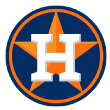 74. J.B. Bukauskas, RHP, Houston
74. J.B. Bukauskas, RHP, Houston
Age: 21 (10/11/1996)
Bats: R | Throws: R
6-foot | 196 pounds
Top level: Class A (Short) | 2017 rank: Not eligible
Bukauskas was one of the top college pitchers in the 2017 draft class and one of the youngest, having graduated early from high school to matriculate to North Carolina at age 17.
A 6-foot right-hander with a strong build, Bukauskas will touch 98 and pitch at 94-95 with a plus slider and some feel for a changeup that projects to above average. He showed above-average control and average command for most of his tenure as a Tar Heel but seemed to wear down a little before the draft, which might be how the Astros landed him at pick No. 15.
Bukauskas doesn't use his lower half much in his delivery, and his fastball can come in flat, leading to concerns that he'll end up in the bullpen or hurt rather than staying in the rotation. Houston seems ready to exhaust the latter possibility first, as he has as much pure stuff as other diminutive right-handers like Marcus Stroman and Sonny Gray did out of college, with a dominant relief role always there as a backup plan.
 75. Jahmai Jones, OF, Los Angeles Angels
75. Jahmai Jones, OF, Los Angeles Angels
Age: 20 (8/4/1997)
Bats: R | Throws: R
6-foot | 215 pounds
Top level: High-A | 2017 rank: 90
The Angels' top prospect coming into 2017, Jones got off to a horrid start as a 19-year-old in the low-A Midwest League, where he hit .167/.211/.292 in April and whiffed in a quarter of his PA. The Angels gave him a few days off before May began, after which he settled down at the plate and started to rake, hitting .299/.369/.460 with a much lower strikeout rate (16 percent) from his return until his promotion to high-A in late July, where he then hit .302/.368/.488 in a better hitters' park.
Jones was the Angels' second-round pick in 2015 as a high school outfielder from Georgia with a broad mix of tools -- including plus raw power -- and exceptional makeup. He's a 55 runner who can handle center field, although the presence of Brandon Marsh in the system might push Jones to a corner, where Jones' power and above-average defense should still allow him to profile as a good regular.
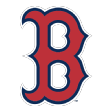 76. Michael Chavis, 3B, Boston Red Sox
76. Michael Chavis, 3B, Boston Red Sox
Age: 22 (8/11/1995)
Bats: R | Throws: R
5-foot-10 | 210 pounds
Top level: Double-A | 2017 rank: Unranked
Chavis played most of 2016 with a broken finger but didn't disclose the injury to the Red Sox, so his awful performance for low-A Greenville at least had an explanation. Fully healthy in 2017, Chavis exploded for 31 homers between high-A and Double-A while cutting his strikeout rate at both levels and looking a lot more like the player Boston thought it was getting with its first-round pick in 2014.
He has big-time pull power, but one key for him last year was working more towards left-center to open up more of the field and make him less vulnerable with two strikes or against soft away pitches.
A fringy defender at third, he lacks the agility to be more than a good 45 there and may end up at first base between that and the presence of Rafael Devers ahead of him.
Chavis has made up for lost time in a huge way and should start 2018 in Double-A at age 22, still needing some work on his approach, but he's already progressed so far by not trying to kill the ball every time he swings that you can project him as a solid regular with some upside if he keeps his average and OBP up.
 77. Max Fried, LHP, Atlanta Braves
77. Max Fried, LHP, Atlanta Braves
Age: 24 (1/18/1994)
Bats: L | Throws: L
6-foot-4 | 200 pounds
Top level: MLB | 2017 rank: 50
Fried's results didn't quite match his stuff or pedigree last year, but he did throw well enough in the second half to earn a pair of call-ups to the majors. In his nine appearances with the Braves, he showed off the three-pitch repertoire and promise that led Atlanta to acquire him in a trade while he was rehabbing from Tommy John surgery.
Fried developed a blister on his throwing hand in May and couldn't shake it until he took about three weeks off in early July. After that, he began to throw more strikes even while bouncing from Double-A to the majors to Triple-A. He was particularly good in the Arizona Fall League, walking just five men in four starts and 19 innings.
When he's right, he'll show three pitches that can all be above average: a fastball up to 95, a true curveball in the mid-70s and a solid mid-80s changeup that he didn't throw enough in the majors.
Fried is an excellent athlete who should have better command than he has had post-TJ, and that's really the last piece for him to put together to be a mid-rotation starter. A healthy year without blisters or yoyo-ing between levels should bring that version of Fried back.
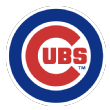 78. Aramis Ademan, SS, Chicago Cubs
78. Aramis Ademan, SS, Chicago Cubs
Age: 19 (9/13/1998)
Bats: L | Throws: R
5-foot-11 | 160 pounds
Top level: Class A | 2017 rank: Unranked
Ademan has emerged as the top position player prospect in a system thinned by promotions and trades. He signed with the Cubs for $2 million as a projectable middle infielder in the 2015 July 2 signing period and should fill out in time to turn his tools into real offensive production. He made his U.S. debut last year, playing the whole summer at age 18, and showed some of that promise in the Northwest League before a late promotion to low-A South Bend, where he was a little overmatched.
He is still very slight but has sneaky strength in his hands and wrists for some extra-base power you that wouldn't expect from his size. That latter factor gives reason to believe that when he fills out he'll be a hard-contact hitter capable of 20-plus home run seasons. He did hit 27 extra-base hits in 317 plate appearances last season despite his youth and size.
Ademan's a solid-average runner now but may slip a bit as he adds weight, and he's more likely to move to second base than stay at short, where he'll be the classic "offensive second base" type who plays adequate defense.
 79. Austin Hays, OF, Baltimore Orioles
79. Austin Hays, OF, Baltimore Orioles
Age: 22 (7/5/1995)
Bats: R | Throws: R
6-foot-1 | 195 pounds
Top level: MLB | 2017 rank: Unranked
Hays mashed at two levels in his first full pro season, culminating in a surprise call-up (and addition to the 40-man roster) in September when he got all of three plate appearances in his first eight days before getting some regular chances to start.
He has a quick bat and very good plate coverage, showing plus power to his pull side but also some juice going the other way for at least some doubles potential. But Hays will have to tighten up his approach at the plate, as he has had so much success at putting the ball in play that he hasn't worked deep counts or shown much patience to date - evidenced by his finishing with just 25 walks and 85 strikeouts in 563 minor-league PA last year.
In the field, I saw Hays play a competent left field and got below-average run times from him, but I have had other scouts report above-average times from home to first along with claims he can stay in center field. He's most likely a left fielder, perhaps a better one than I saw, and with his ability to hit for average and power should be a solid average or better regular there.
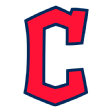 80. Nolan Jones, 3B, Cleveland Indians
80. Nolan Jones, 3B, Cleveland Indians
Age: 20 (5/7/1998)
Bats: L | Throws: R
6-foot-4 | 185 pounds
Top level: Class A (Short) | 2017 rank: Just missed
Jones played baseball and ice hockey for three years at Holy Ghost Prep outside of Philadelphia, but ditched his skates his senior year to focus exclusively on baseball, where he played shortstop and mashed his way to a first-round bonus of $2.25 million as the 55th overall pick in the 2016 draft.
After a tough first summer in pro ball, Jones bounced back in 2017 even with the promotion to advanced short season, leading the New York Penn League in OBP and finishing third in slugging percentage and second in doubles.
He has a sweet left-handed swing that gives him projection to hit and to hit for power with the ability to drive the ball to all fields, and he has a good idea of the strike zone as well. In a tiny sample last year, he wasn't overmatched by left-handed pitching, a small but still positive sign given how many good left-handed-hitting prospects need time to close their platoon splits.
Jones was too big for shortstop even in high school, but he has the arm strength and athleticism for third base right now with a decent chance that he even outgrows that position and has to move to first.
There's still a lot of variance in Jones' potential outcomes due to his position, youth and lack of full-season experience, but there's too much offensive upside here to ignore.
 81. Cal Quantrill, RHP, San Diego Padres
81. Cal Quantrill, RHP, San Diego Padres
Age: 23 (2/10/1995)
Bats: L | Throws: R
6-foot-2 | 165 pounds
Top level: Double-A| 2017 rank: 23
Quantrill's full-season debut was good, maybe better than good if you consider that it was also his first full year back after Tommy John surgery in 2016.
The Stanford product would show three plus pitches at times the summer after signing, but in 2017 the changeup was his only plus pitch. It was at times a 70, but still the one true swing-and-miss weapon he has. His velocity was still fine -- up to 95 most games -- but the fastball doesn't play that well in the upper part of the zone. He has had a plus slider in the past, but last year he threw both a slider and curveball, and the slider seemed worse off for the addition of the second breaking ball.
Quantrill's delivery isn't perfect, and he has some trouble keeping his timing when coming down the hill toward the plate that leads to some of his fastball command and contact issues. However, there's still a good starter package here: an out pitch, above-average velocity, a chance for a plus slider, and above-average control right now. I think he offers a high floor, probably a fourth starter/league-average type, but we have seen better from him and there's still reason to hope it returns as he gets further away from the knife.
 82. Chris Rodriguez, RHP, Los Angeles Angels
82. Chris Rodriguez, RHP, Los Angeles Angels
Age: 19 (7/20/1998)
Bats: R | Throws: R
6-foot-2 | 185 pounds
Top level: Class A | 2017 rank: Unranked
The Angels nabbed Rodriguez in the fourth round in the 2016 draft, as he was the rare pop-up Florida kid who came on very late that spring and the Halos were one of the few teams still on him when he peaked closer to the draft.
The pick already seems prescient, as Rodriguez has continued to pick up velocity, averaging nearly 95 mph as a starter in 2017, to go with the best slider in the Angels' system and an above-average changeup. He'll mix in four- and two-seamers, with very good sink on the latter, and even has a curveball that's good enough to keep in his repertoire at least as a show-me pitch.
His delivery is sound, with improved extension over his front side since he got into pro ball, but he'll need to work on consistency and command as he continues to fill out. He was hurt by his defense last year, as he got ground balls but gave up a ton of singles and doubles that might have been converted by better infields.
There's still a lot of projection in this ranking as Rodriguez has growth remaining, but he's here because he has No. 2 starter upside and many ways to become at least a league-average starter even if he doesn't fulfill all of his potential.
 83. Jhailyn Ortiz, OF, Philadelphia Phillies
83. Jhailyn Ortiz, OF, Philadelphia Phillies
Age: 19 (11/18/1998)
Bats: R | Throws: R
6-foot-3 | 215 pounds
Top level: Class A (Short) | 2017 rank: Unranked
Ortiz signed with the Phillies for just over $4 million in July 2015, but at the time was seen primarily as a bat-first guy without a position. After two summers in short-season leagues, he has emerged as an offensive prospect while also shocking scouts and even Phillies coaches with his athleticism, running speed, and plus arm.
He is a hitter first with an advanced approach at the plate and has shown some power in games with more likely to come down the road. He tied for third in the NY Penn League in homers and finished sixth in OBP even though he was one of just three 18-year-olds in the league to get 100 PA.
While Ortiz's swing is big, he will go the other way and has already shown some power to the opposite field. He'll show 70 raw in BP, and projects to 30-plus homers in the big leagues.He is a very long way away, having yet to play a game in a full season league but the early returns are very promising.
 84. Adbert Alzolay, RHP, Chicago Cubs
84. Adbert Alzolay, RHP, Chicago Cubs
Age: 23 (3/1/1995)
Bats: R | Throws: R
6-foot | 179 pounds
Top level: Double-A | 2017 rank: Unranked
At age 21, Alzolay had a nondescript year in low-A South Bend's rotation and didn't even merit a mention in my Cubs org write-up last winter. He took a huge step forward across the board, finishing the 2017 season with a strong stint in Double-A and allowing the Cubs to deal right-hander Dylan Cease to the White Sox in the Jose Quintana trade.
Alzolay is mostly a fastball/curveball guy, 92-96 mph, with good command of his fastball to both sides of the plate working with a plus breaking ball that gets swings and misses. He also has a changeup that's less consistent than his other two pitches but is at least average when it's on.
He's on the smaller side and doesn't get much downhill plane on his fastball, so he's been a fly ball pitcher in the minors and could become homer-prone in the big leagues. But he rarely walks guys and is very aggressive on the mound, so as long as he can maintain that velocity he can get away with a few solo homers. He projects as an above-average starter but perhaps one who goes less than 200 innings. If his velocity doesn't hold up, he could be a dominant reliever with the curve as his out pitch.
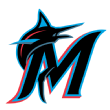 85. Monte Harrison, OF, Miami Marlins
85. Monte Harrison, OF, Miami Marlins
Age: 22 (8/10/1995)
Bats: R | Throws: R
6-foot-3 | 220 pounds
Top level: High-A | 2017 rank: unranked
Harrison was the Brewers' second-round pick and third overall pick in a 2014 draft class that also placed Brandon Woodruff on this year's top 100, and he has surpassed the two players taken ahead of him now that he's had a healthy season and been able to work on his approach.
Harrison played baseball, basketball, and football in high school, committing to the University of Nebraska as a wide receiver, so he came into pro ball without a ton of experience on the diamond. His early results showed it with a 32 percent strikeout rate over 2015-16 around various injuries. But Harrison has shortened his swing so he's less long to and around the ball and it has led to more contact.
He's a plus runner with below-average instincts on the bases, while his speed and strong arm make him a candidate to play anywhere in the outfield, including center. There's still risk here with the bat -- he still has a tendency to chase off-speed stuff -- and 2017 was the first full, healthy season he'd had in pro ball, but Harrison possesses power/speed/defense upside here along the lines of Mike Cameron if it all comes together.
 86. Daz Cameron, OF, Detroit Tigers
86. Daz Cameron, OF, Detroit Tigers
Age: 21 (1/15/1997)
Bats: R | Throws: R
6-foot-2 | 185 pounds
Top level: Class A | 2017 rank: Unranked
Cameron went from Houston to Detroit in the August deadline deal for Justin Verlander that also included top-100 prospect Franklin Perez, just two years after the Astros paid the son of longtime MLB outfielder Mike Cameron a $4 million bonus out of high school.
Daz has his father's height but a slightly smaller frame and shows the same overall mix of tools with just a little less power and speed. He's an above-average runner who should be a plus defensive center fielder with an above-average arm. At the plate, he came out of high school with a short, somewhat flat swing that produced contact but not power. He has worked on hitting the ball in the air more, producing more fly balls and fewer ground balls thanks to more hip rotation and some added loft in his finish.
Cameron started slow in 2017, coming off a broken finger that ended his 2016 season in early July, but hit .329/.408/.542 after the Midwest League All-Star break with improved walk and strikeout rates. He might be a "post-hype" guy now, having fallen off the radar a bit after his huge bonus and modest early returns in the minors, but he looks as if he's growing into an even better player than projected when the Astros drafted him.
 87. Sandy Alcantara, RHP, Miami Marlins
87. Sandy Alcantara, RHP, Miami Marlins
Age: 22 (9/7/1995)
Bats: R | Throws: R
6-foot-4| 170 pounds
Top level: MLB | 2017 rank: Unranked
Alcantara was the main prospect sent to the Marlins in the deal that brought Marcell Ozuna to St. Louis. He is a huge right-handed starter who works at 94-100 mph and shows four pitches with none of the secondary offerings very consistent, which in turn lets hitters cheat a little on the big fastball.
Alcantara's curveball and slider can both show plus, with the curveball at 79-84 better than the cutter-like slider when I saw him, and he has a changeup that he doesn't use enough to have much feel for it. The changeup was too firm when he worked in relief in the majors, but he created more separation between the change and the fastball in the Arizona Fall League and there's hope it can be a solid-average pitch for him.
He's 6-foot-4 with clear starter stuff and arm strength, and looks bigger than his listed 170 pounds with clear starter stuff and arm strength, but he's only 21 and really hasn't gotten his timing or delivery down yet to the point where he can command his stuff.
Many pitchers like this never figure it out, but if they do, they can pitch at or near the top of a rotation or in the highest leverage roles in the bullpen. Alcantara should go to Triple-A this year to start, with an emphasis on throwing all of his pitches and trying to command his fastball in the lower half of the zone.
 88. Brandon Marsh, OF, Los Angeles Angels
88. Brandon Marsh, OF, Los Angeles Angels
Age: 20 (12/18/1997)
Bats: L | Throws: R
6-foot-4 | 210 pounds
Top level: Rookie | 2017 rank: Unranked
Angels' 2016 first-round pick Matt Thaiss has lost some luster since the selection, but the rest of that draft class is more than making up for it, placing two players on the top 100 and another already cashed in to help acquire Ian Kinsler.
Marsh was the team's second-round pick, and nearly failed to agree on a contract after his physical revealed a back injury, but fortunately for everyone, he came to terms and has emerged as one of the team's most exciting prospects. He is a great athlete with plus speed and above-average range in center field and the potential for 20-odd homers.
He missed a month with a thumb injury last summer, playing just 39 games in the Pioneer League, but when he played, he raked with 22 extra-base hits in that span. Those are still Marsh's only official games in the year and a half since he signed so he's behind other players his age in experience, and his approach at the plate is going to need some work when he faces better pitching in 2018.
Marsh isn't as advanced a prospect as fellow Angels outfielder Jahmai Jones, but offers more ceiling due to his speed and better chance to stay in center, and could end up No. 2 in the Angels' system with a good and healthy year in the Midwest League.
 89. Logan Allen, LHP, San Diego Padres
89. Logan Allen, LHP, San Diego Padres
Age: 21 (5/23/1997)
Bats: R | Throws: L
6-foot-3 | 200 pounds
Top level: High-A | 2017 rank: Unranked
The Padres traded Craig Kimbrel to the Red Sox before the 2016 season in exchange for four prospects. One, Manuel Margot, is their center fielder right now, and Allen has emerged as the second-best part of the deal as shortstop Javier Guerra has struggled with medical issues.
Allen gets some angle from his three-quarters slot, coming down the hill well at 90-95 while showing an above-average slider and traditional curveball as well an average changeup. Allen punched out 142 men in 124 innings across both levels of Class A ball last year, and in 22 of his 24 starts surrendered three earned runs or fewer. His Cal League line was wrecked by disaster starts at Lancaster and Rancho Cucamonga, both big hitters' parks, but without those outings, he had a 1.95 ERA for high-A Lake Elsinore.
Scouts love his feel for pitching and the way he talks about and wants to understand his craft. They do differ on his ceiling, though, as he has some projection but not a ton left and has already gained velocity since signing. I see a good fourth-starter package now, but someone with the athleticism and command to end up above-average even if he never adds any pure stuff.
 90. Touki Toussaint, RHP, Atlanta Braves
90. Touki Toussaint, RHP, Atlanta Braves
Age: 22 (6/20/1996)
Bats: R | Throws: R
6-foot-3 | 185 pounds
Top level: Double-A | 2017 rank: Unranked
Toussaint was a first-round pick by the Diamondbacks, but then-GM Dave Stewart used him to dump a bad contract off the books, which has turned out to be Atlanta's gain as Toussaint has made slow but significant progress turning his ridiculous arm into something like a major league pitcher.
He was raw as a high school pitcher but had a very quick arm and lots of athleticism for scouts to dream on. He's simplified his arm action since going to Atlanta, helping him reduce some of his wildness -- although he can still spray the ball, with four starts last year of five or more walks. He'll show a plus curveball that could even be a 70, and has developed a changeup that's average trending towards plus.
Toussaint's future is all about command and control, and there's no physical reason he can't get to average in both over time. If he does, it's No. 1-2 starter stuff, and if he doesn't, which is probably still the safer bet, he could be an Edwin Jackson-type fourth starter or a high-leverage reliever capable of going more than an inning per game.
 91. Bobby Bradley, 1B, Cleveland Indians
91. Bobby Bradley, 1B, Cleveland Indians
Age: 22 (5/29/1996)
Bats: L | Throws: R
6-foot-1 | 225 pounds
Top level: Double-A | 2017 rank: Unranked
Bradley dropped some weight last year, helping him regain some lost athleticism and show better defense around the bag at first base, which helped address one of the main concerns around him coming into 2017.
The Mississippi high school product also cut his strikeout rate from 30 percent to 23 percent despite moving up a level from high-A to Double-A, finishing second in the Eastern League in homers and 13th in slugging as a 21-year-old.
At the plate, Bradley still swings hard, producing plus power even though he's not very long from load to contact. He can overstride and end up losing some balance as a result, which I think will make him more vulnerable to off-speed stuff.
He's never going to be svelte, but as long as he maintains his conditioning, he should be able to stay at first, where a .260/.340/.500 line is very possible and would allow him to profile as a regular.
 92. Pavin Smith, 1B, Arizona Diamondbacks
92. Pavin Smith, 1B, Arizona Diamondbacks
Age: 22 (2/6/1996)
Bats: L | Throws: L
6-foot-2 | 210 pounds
Top level: Class A (Short) | 2017 rank: Not eligible
Arizona took Smith with the seventh overall pick in the 2017 draft -- one pick ahead of his Virginia teammate Adam Haseley -- after a tremendous junior year vaulted him from possible first-round pick to the top ten.
Smith makes a lot of contact with a moderate-length swing and very upright stance, so he doesn't get much hip rotation and can put the ball on the ground more than most first basemen, which leads to a higher average but fewer extra-base hits. The biggest question around Smith is his power. While he homered more than he struck out for Virginia in the spring, his swing is more geared for contact than big power and he didn't homer in 223 plate appearances after he signed.
There's a good floor of a high-OBP, moderate-power first baseman, similar to Dave Magadan, but the power spike Smith showed as an amateur may mean there's enough juice to come to make him a fringe star.
 93. Brandon Woodruff, RHP, Milwaukee Brewers
93. Brandon Woodruff, RHP, Milwaukee Brewers
Age: 25 (2/10/1993)
Bats: L | Throws: R
6-foot-4 | 215 pounds
Top level: MLB | 2017 rank: 100
Woodruff doesn't overpower anyone with pure stuff, but throws three solid to above-average pitches: a sinking fastball that averaged 94 mph in the majors, a hard slider, and mid-80s changeup that is the least advanced of his offerings.
He's very competitive and boasts above-average control with good feel, and he has a delivery he can repeat that puts him on line to the plate.
He missed about five weeks with a hamstring injury that cost him his first major league start, but he returned in August and posted three quality starts in eight tries, with left-handed batters giving him the most trouble. He's a major-league-ready, fourth-starter type who should pitch above the level of his stuff because of his aptitude for pitching and aggressive style.
 94. Franklin Barreto, SS/2B, Oakland Athletics
94. Franklin Barreto, SS/2B, Oakland Athletics
Age: 22 (2/27/1996)
Bats: R | Throws: R
5-foot-10 | 190 pounds
Top level: MLB | 2017 rank: 56
Barreto's year was disappointing all around, although he was one of the youngest regulars in the Pacific Coast League at 21 and certainly has time to fix what's wrong.
He saw a huge drop in his contact rate, striking out nearly 28 percent of his plate appearances in Triple-A and then doing so in 43 percent in his major league stint. His recognition of breaking stuff is still not where it should be, and he will chase fastballs up above the middle of the zone more often than he should, as well.
He's still a plus runner and has come into some power now that he's gotten stronger, although he's probably maxed out his body and will settle into this 15-20 homer range.
Barreto is a natural shortstop whose defense hasn't been as advertised the past year or two, but he could slide to second base or even move to center field, where his speed might lead to plus range. He still has youth on his side, as well as that speed and a swing that should, in theory, produce more contact than this, but he has clear areas for improvement heading into 2018.
 95. Heliot Ramos, OF San Francisco Giants
95. Heliot Ramos, OF San Francisco Giants
Age: 18 (9/7/1999)
Bats: R | Throws: R
6-foot-2 | 185 pounds
Top level: Rookie | 2017 rank: Not eligible
Call him Heliot, call him Oliver, Ramos had one of the best pro debuts of any member of the 2017 draft class. Drafted out of a Puerto Rican high school, Ramos is a physically mature kid with present plus raw power and some feel to hit already, although he didn't show much patience or ability to work deep counts in rookie ball.
An average runner now, Ramos is likely to fall below that and end up in right field rather than center. That puts some pressure on his bat, which so far at least looks up to the task, as scouts were impressed by the quality of contact he'd make and his ability to drive the ball in the Arizona Rookie League last year.
He is the best prospect in a bad system, which can color perceptions of a player, although I had several people outside of the Giants org push for him to make the top 100. He will have to make adjustments to his approach to keep getting to the power, but the hit tool looks like it will be good enough, and he'll get to the 25-30 homers that he'll need to be a regular in right.
 96. Joey Wentz, LHP, Atlanta Braves
96. Joey Wentz, LHP, Atlanta Braves
Age: 20 (10/6/1997)
Bats: L | Throws: L
6-foot-5 | 210 pounds
Top level: Class A | 2017 rank: Unranked
Wentz was part of Atlanta's big haul of prep arms in the 2016 draft class, three of whom are on this top 100 list, and had a great first full season as a 19-year-old in low-A.
He has great deception in his delivery, extending well out front and getting great ride on his 89-92 mph fastball so that it plays up like he's throwing 95. He'll pair it with a curveball and changeup, both of which will flash above-average, and repeats his delivery well with very little effort unless he reaches back for a little more velocity.
He's a very unsexy prospect since he doesn't have a plus pitch or huge projection or something else to make him jump out of the team photo, but he does the little things well and hitters really do not see the ball well enough out of his hand to do damage. His stuff would peg him as a fourth or fifth starter, but his command and deception will make him more than that in the end.
 97. Keibert Ruiz, C, Los Angeles Dodgers
97. Keibert Ruiz, C, Los Angeles Dodgers
Age: 19 (7/20/1998)
Bats: S | Throws: R
6-foot-0 | 200 pounds
Top level: High-A | 2017 rank: Unranked
Ruiz can really hit, enough that he'd be a prospect at any position, but as a solid receiver with elite framing skills, he sneaked onto the back of the top 100 after a great year at age 18 in Class A ball.
At the plate, Ruiz is nominally a switch-hitter, but he's much better batting left-handed, shorter to the ball, more rotational, and showing more bat speed -- all eight of his homers last year came from the left side, and he hit just .240/.280/.310 right-handed.
His catching skills are all average or better except for his fringy arm, which is probably good enough to play given how many other things he does well.
Ruiz won't turn 20 until July and should spend at least part of 2018 in Double-A, as his bat seems advanced enough that he'll need the challenge of facing better pitching. The Dodgers signed Ruiz for just $140,000, which looks like a screaming bargain for a guy who profiles as an everyday catcher and could turn into quite a bit more.
 98. Jorge Alfaro, C, Philadelphia Phillies
98. Jorge Alfaro, C, Philadelphia Phillies
Age: 25 (6/11/1993)
Bats: R | Throws: R
6-foot-2 | 225 pounds
Top level: MLB | 2017 rank: 45
At any other position, Alfaro would probably have fallen off the prospect map by now given his allergy to the base on balls and modest batting averages, but he is a catcher with an 80 arm and 80 power so we'll have to let him slide another year.
He has bat speed and will show that power at times in games, taking advantage of the 2017 baseball for five homers in 114 MLB plate appearances last year, one of which was the hardest-hit ball by any Phillies player all season. He does not walk easily; he has drawn 39 unintentional walks in more than 900 plate appearances over the past two calendar years, and he had the second-worst K/BB ratio of any MLB player to get at least 100 PA last year.
Behind the plate, he has improved his receiving and blocking but struggled badly with framing after his call-up. His arm strength is elite, enough so that he should be effective against the running game, but he could still improve his transfer to reduce his throw times to second. Alfaro has so much unfulfilled potential with the bat, glove and even the arm, and even though he has been around forever (he signed with Texas in 2009), he'll play this season at 25. He'll play a long time as a backup but still has star upside if he improves on either side of the ball.
 99. Albert Abreu, RHP, New York Yankees
99. Albert Abreu, RHP, New York Yankees
Age: 22 (9/26/1995)
Bats: R | Throws: R
6-foot-2 | 175 pounds
Top level: High-A | 2017 rank: Unranked
The Yankees acquired Abreu from the Astros as part of last winter's deal for Brian McCann. Abreu missed two months in 2017 because of shoulder soreness but came back strongly, showing some starter potential and a chance for three above-average pitches.
He pitches at 94-96 with a power curveball in the low 80s and a solid changeup in the mid-80s that has good action rather than deception. His arm action is short and he doesn't repeat it very well, but he's on line to the plate and seems athletic enough to learn some consistency in his arm swing, which should help improve his control and command.
Abreu needs to stay healthy, of course, but he has a starter's build and frame, and even has a little projection remaining. This is a nice league-average starter kit with very little pro experience to date, enough for the Yankees to dream on keeping him in the rotation for the long term.
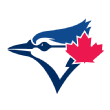 100. Nate Pearson, RHP, Toronto Blue Jays
100. Nate Pearson, RHP, Toronto Blue Jays
Age: 21 (8/20/1996)
Bats: R | Throws: R
6-foot-6 | 245 pounds
Top level: Class A (Short) | 2017 rank: Not eligible
Pearson had a circuitous route to the 2017 first round, as he was undrafted out of high school, pitched for one year at Florida International and then transferred to Central Florida Junior College to become draft-eligible a year earlier. He showed well in early-season matchups against fellow first-round pick Brendon Little (Cubs), but really spiked at the end of the spring when he hit 100 mph in a well-attended workout for scouts.
Pearson is huge and already built for the major-league rotation with a good delivery and arm action that he can repeat. He's been up to 99 in pro ball and can elevate the ball for swings and misses. He has a slider, curve, and changeup, but as a whole his secondary stuff is still well behind, although he will flash a plus slider at times thanks to his tremendous arm speed.
The development of his repertoire will determine his future role, but his size, control, and arm speed give him a pretty high ceiling, and the Blue Jays might have caught themselves quite a fish with the 28th pick.
